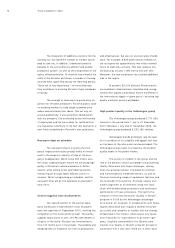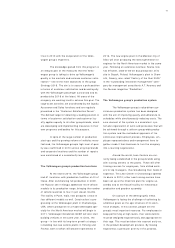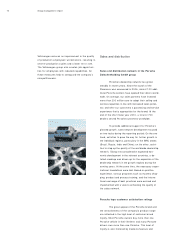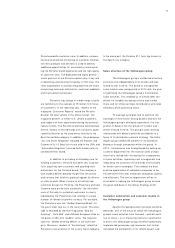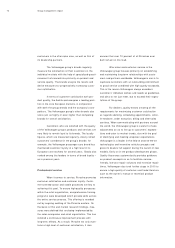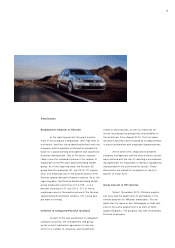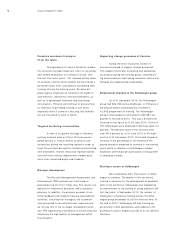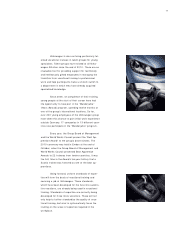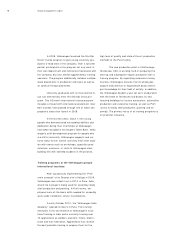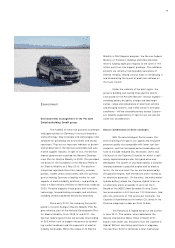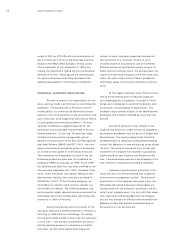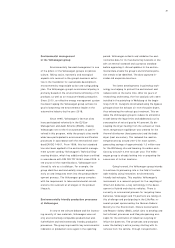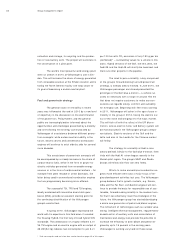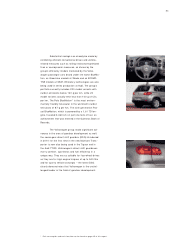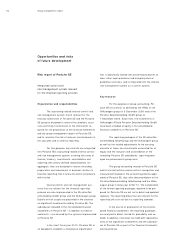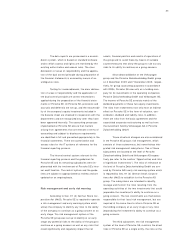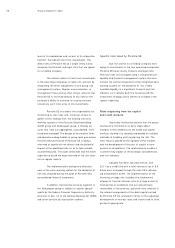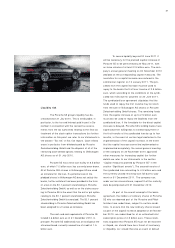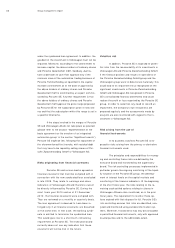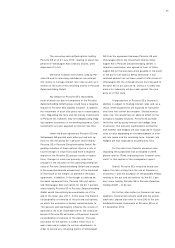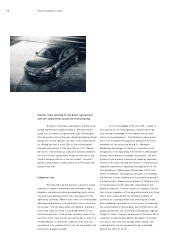Porsche 2010 Annual Report Download - page 82
Download and view the complete annual report
Please find page 82 of the 2010 Porsche annual report below. You can navigate through the pages in the report by either clicking on the pages listed below, or by using the keyword search tool below to find specific information within the annual report.output of 380 hp (279 kW) with fuel consumption of
just 6.8 liters per 100 km in the best-case scenario,
based on the NEDC (New European Driving Cycle).
This is equivalent to CO2 emissions of 159 g/ km,
making the Panamera S Hybrid the most economical
Porsche of all time. These figures are achieved with
the optional all-season low-rolling-resistance tires,
specially developed for the Panamera by Michelin.
Continuous, sustainable improvements
Porsche is aware of its responsibility for the
future and has made a commitment to environmental
protection. The express aim of Porsche’s environ-
mental policy is to minimize the detrimental conse-
quences of all of its activities on the environment and
save resources, while supporting international efforts
to solve global environmental problems. The man-
agement coordinates targeted measures for the
continuous and sustainable improvement of environ-
mental protection. To this end, Porsche has imple-
mented an environmental management system.
Based on the provisions of the EU’s Eco-Management
and Audit Scheme (EMAS) and ISO 14001, the com-
pany’s environmental protection policy is conceived
as an end-to-end system of interlocking measures.
The environmental management system at the Zuf-
fenhausen production plant was first validated ac-
cording to EMAS as long ago as 1996. Since 1999,
the Zuffenhausen plant has also been certified to the
internationally applicable ISO 14001 standard. Since
2002, 2005 and 2008, the Leipzig, Weissach and
Sachsenheim facilities have also been certified to
DIN EN ISO 14001. At the Porsche subgroup, ac-
countability for actions and economic success are
inextricably intertwined. The following projects and
environmental targets demonstrate how seriously the
sustainable use of eco-friendly plant technology and
resources is taken at Porsche.
During the planning and construction of the
new paint shop at the Zuffenhausen plant, Porsche is
investing in state-of-the-art technology. The excep-
tionally eco-friendly facility is due to go into operation
in early 2011. 100 percent containment will ensure
that the painting process is completely protected
from dust. An innovative electrostatic separator
system for paint overspray keeps particle and sol-
vent emissions to a minimum. Thanks to an in-
creased volume of circulated air and an extremely
efficient exhaust air purification system using a 10-
meter (33-foot) chimney stack, the process does not
require the otherwise mandatory 60-meter (200-foot)
stack. The paint shop’s state-of-the-art production
technology keeps its emissions well below statutory
limits.
At the engine assembly shop, Porsche achie-
ved its environmental goal of reducing single-use
extra packaging by five percent. A number of work-
shops were conducted to examine the delivery and,
in particular, the packaging of engine parts. This
enabled a large number of parts to be identified with
packaging that could be reduced by more than five
percent.
Around 70 percent of new vehicles in the
Cayenne and Panamera model series are shipped to
destinations worldwide from the ports of Emden and
Bremerhaven. The logistics department therefore
agreed the goal of reducing existing and preventing
further film adhesion on new vehicles by using closed
rail cars. The move to closed rail cars further opti-
mized the rail transport that had been successfully
implemented for new Cayenne and Panamera vehi-
cles. Time-consuming and costly car-wrapping of the
new vehicles is reduced and avoided completely.
Successful environmental protection is the
result not only of a well-functioning and integrated
environmental management system. The personal
commitment of all employees also plays a key role.
Motivated and skilled employees whose ideas are
incorporated into the company’s processes are Por-
sche’s most valuable asset. It is only with their exper-
tise, experience and knowledge that the company
can put into practice an efficient environmental man-
agement system that delivers forward-looking im-
provements for our environment.
Group management report80


